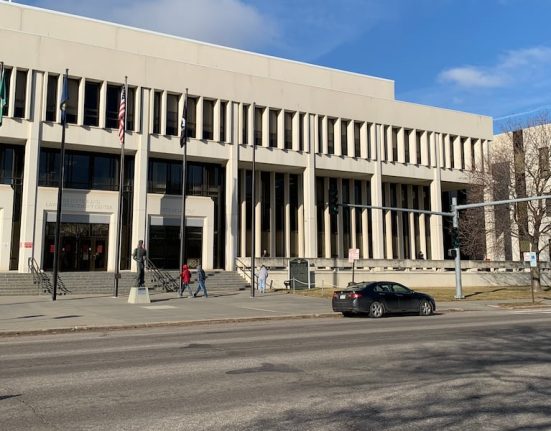When it comes to challenges in the property insurance marketplace, in relation to climate, weather, catastrophe losses and insurer’s ability to underwrite property business profitably, typically California or Florida are the poster child, but analyst firm ALIRT Insurance Research believes the issue is more widespread across the United States. ALIRT focuses on State Farm’s recent announcement of a further pull-back from writing business in California.
ALIRT focuses on State Farm’s recent announcement of a further pull-back from writing business in California.
The property insurance market there has faced significant challenges, after following some years of elevated property losses, in terms of implementing risk adequate pricing to make underwriting there sustainable.
For some carriers, the wait for a better legislative environment that allows them to price their policies in a way they deem risk adequate, has been too long, resulting in pull-backs from a number of major players.
While there are now steps being taken to improve the insurance market by lawmakers and regulators, such as the recently announced rules to allow the use of forward-looking catastrophe models and to expand catastrophe model use to cover additional perils, for some it is too late and likely to take effect after they have exhausted their risk appetite for writing new business there.
Fast-forward to this week and State Farm announced its latest pull-back from California, saying its carrier “State Farm General Insurance Company is working to ensure its long-term sustainability in California.”
The move features the non-renewal of some 72,000 policies, 30,000 California homeowners, rental dwelling, and other property insurance policies and 42,000 policies in the commercial apartment insurance sector, as our sister publication Reinsurance News reported at the time.
Recall that State Farm had said it was pulling back from the California property insurance market last May, with a plan to cease writing business and personal P&C property as it cites exposure growth, rising catastrophe risks and reinsurance market challenges as reasons for the move.
The insurer is just one of a number to either trim their property catastrophe exposure in the state, suspend new business, or exit, in recent years, as the insurance crisis accelerated in California.
ALIRT Insurance Research sees State Farm’s California carrier as “an excellent proxy for what other property insurers are likely facing in this market,” noting that its ALIRT Score of 40 for State Farm General Insurance Company is “just at the edge of ALIRT’s historically normal range of 39-61.”
ALIRT adds, “Despite substantial direct premium growth over the past five years (66% growth since 2019), SFGIC has reported underwriting losses in four of these five years. The average combined ratio over this period was 114% vs. 103% for the ALIRT Personal Lines Composite.
“SFGIC’s underwriting performance was particularly poor in 2023, with the company reporting a loss ratio of 108% (combined ratio of 138%), which reflects both poor accident year results (accident year combined ratio of 122%) plus substantial prior year reserve strengthening of $470 million, with additions for each of the past 10 accident years.
“This underwriting loss would be even worse absent SFGIC’s cession of almost 20% of its direct written premium to parent State Farm Mutual Auto Insurance Company.”
The large operating loss for full-year 2023 contributed to a 40% decline in SFGIC’s policyholder surplus as of 12/31/2023, ALIRT further explained.
“This hit to surplus, combined with the aforementioned strong direct premium growth, produced a spike in net premium leverage and a year end 2023 risk-based capital ratio of just 114%, which is almost 1/3 that of the current personal lines composite,” ALIRT continued. Saying, “We remind readers that breaching the company action level (CAL) of 100% in the risk-based capital regime can result in regulators requiring a remedial financial plan, a result previously unthinkable for a subsidiary of a leading personal lines organization like State Farm.”
ALIRT Insurance Research then notes that, for other leading insurance groups, it’s harder to compare to State Farm’s experience, given the majority don’t have dedicated California writing carriers.
But, the analysts also point out that, “For the time being, however, it is likely that the California homeowners and commercial property insurance markets will continue to face pricing and availability pressures.”
Drawing back and looking more widely than just California though, ALIRT warns that these types of problems look more widespread across the US property insurance market landscape.
“It is our belief, analyzing the weakening ALIRT results for homeowners and commercial multi-peril specialists writing businesses in other geographies, that this problem is not confined to the Golden State alone. The upcoming release of our year end 2023 executive summary flag letters will further demonstrate the financial toll that property loss trends are having on insurers in a growing number of states,” the analyst firm cautions.
Which suggests we may increasingly hear of similar issues in other states’ property insurance marketplaces, all of which could mean a sustained push for higher inward rates from primary carriers as they look to adjust their business models to become more sustainable in these cat and climate exposed regions.
All property insurers around the world are battling numerous pressures right now, from the inflationary upward-pressure on their exposure, to the effects of growing policy count as people move to desirable coastal and often cat-exposed regions, alongside the somewhat elevated severe weather catastrophe event frequency that has been seen, severe loss events such as wildfires and hurricanes, plus perceived climate-driven effects on the environment and weather patterns that are changing the risk landscape.
Likely also meaning that reinsurance capital will remain more cautious in these peak catastrophe and weather exposed property insurance zones in the United States.
Which may result in reinsurance costs remaining at more elevated levels, and reinsurer appetites remaining at higher-attachment levels, amplifying one of the most challenging financial and risk factors property insurers in the US face today, their ability to economically protect themselves, their customers and their shareholders.
Inward premium rates and other levers such as investment returns, need to pay for loss costs, costs-of-capital, the expense of operations, a profit, and an outward reinsurance strategy.
It seems there may be more work to do before that balances out economically and sustainably for the insurance industry.








